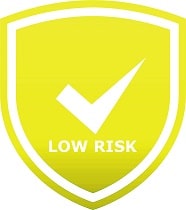Is SPD489 Safe in Breastfeeding
Question
I am a breastfeeding mother and i want to know if it is safe to use SPD489? Is SPD489 safe for nursing mother and child? Does SPD489 extracts into breast milk? Does SPD489 has any long term or short term side effects on infants? Can SPD489 influence milk supply or can SPD489 decrease milk supply in lactating mothers?
SPD489 lactation summary

- DrLact safety Score for SPD489 is 3 out of 8 which is considered Low Risk as per our analyses.
- A safety Score of 3 indicates that usage of SPD489 may cause some minor side effects in breastfed baby.
- Our study of different scientific research indicates that SPD489 may cause moderate to no side effects in lactating mother.
- Most of scientific studies and research papers declaring usage of SPD489 low risk in breastfeeding are based on normal dosage and may not hold true for higher dosage.
- While using SPD489 We suggest monitoring child for possible reactions. It is also important to understand that side effects vary largely based on age of breastfed child and time of medication in addition to dosage.
- Score calculated using the DrLact safety Version 1.2 model, this score ranges from 0 to 8 and measures overall safety of drug in lactation. Scores are primarily calculated using publicly available case studies, research papers, other scientific journals and publically available data.
Answer by Dr. Ru: About SPD489 usage in lactation
A prodrug that is metabolized directly in the intestine to dextroamphetamine. It is used to treat Attention Deficit Hyperactivity Disorder (ADHD) and bulimia. Dextroamfetamine is a sympathomimetic drug, central nervous system stimulant, whose action and uses are similar to amphetamine (see information) which is its dextro isomer. It is excreted in breast milk, concentrating about 3 times more than in plasma and resulting in a relative dose of around 6% for the infant (Ilett, 2007). In infants whose mothers were taking dexamfetamine as treatment for ADHD, levels ranging from undetectable to 14% of maternal plasma levels have been measured and no problems were observed in the clinical follow-up of these infants (Ilett, 2007). There is little information on the impact of amphetamine abuse on infant development and health (Oei, 2012, Wise, 2007; Moretti, 2000), but it is known that they are more exposed to social problems, domestic violence, and lower rates of breastfeeding (Oei, 2010). There is controversy over the possibly mild negative effect of amphetamine on prolactin (Petraglia, 1987; DeLeo, 1983), but milk production in mothers who took it therapeutically was not affected (Öhman, 2015). During breastfeeding, the therapeutic use (ADHD, bulimia) of amphetamine can be assessed, using the lowest possible effective dose and monitoring the occurrence of irritability, insomnia, lack of appetite and weight loss. Its use as an illegal drug is totally discouraged (Oei, 2012).
Alternate Drugs for Psychostimulants and Nootropics. ATC N06B
Amphetamine(Unsafe)
Caffeine(Low Risk)
Atomoxetine(Unsafe)
Modafinil(Unsafe)
Armodafinil(Unsafe)
Citicoline(Safe)
Clobenzorex(Unsafe)
Deanol(Unsafe)
Pemoline(Unsafe)
Piracetam(Low Risk)
Pirisudanol Dimaleate(Unsafe)
Pyritinol(Low Risk)
Metamfetamine Hydrochloride(Unsafe)
Lisdexamfetamine Mesilate(Low Risk)
Amfetamine(Unsafe)
Methylphenidate-Hcl(Safe)
Dexamfetamine Sulfate(Low Risk)
Lisdexamfetamine dimesylate(Low Risk)
Guaranine(Low Risk)
Betanamin(Unsafe)
Methyltheobromine(Low Risk)
Theine(Low Risk)
Tomoxetine(Unsafe)
